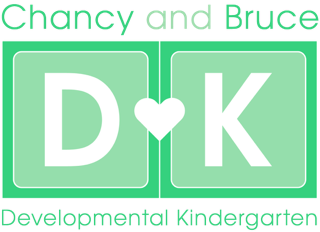Longitudinal Analysis
Longitudinal Analysis of Processing Skill Development and Academic Achievement: Insights from Chancy and Bruce Educational Resources, Inc.
Objective
1. Evaluate the correlation between early processing skill development and academic outcomes through high school and beyond.
2. Assess the impact of school readiness on long-term educational and career success.
3. Validate findings from the longitudinal studies conducted by Chancy and Bruce LLC.
Study Design
Design: A mixed-method, longitudinal study combining quantitative and qualitative analysis to track students over time.
Participants:
- Sample Size: A representative cohort of 150 children balanced by socioeconomic status, geographic location, and other demographics.
- Inclusion Criteria: Children assessed at 4½ years by Chancy and Bruce LLC, spanning 1984–2001.
- Exclusion Criteria: Children without consistent educational records or insufficient data on early assessments.
Data Collection
- Initial Assessment (4½ years old):
- Processing skills: Memory, attention, auditory processing, and motor skills.
- School readiness metrics: Basic literacy, numeracy, and social-emotional readiness.
- Follow-Up Assessments:
- Conduct assessments at key educational milestones: end of elementary school (grade 5), middle school (grade 8), high school completion, and four years post-high school.
- Data points: Academic records, standardized test scores, and personal interviews.
- Surveys and Interviews:
- Collect qualitative data from students, parents, and educators regarding educational experiences and career pathways.
- Corroborating Data:
- Access public records (college admissions, employment history).
Variables
- Independent Variables:
- Early processing skill development scores.
- School readiness indicators.
- Dependent Variables:
- Academic placement (grade-level retention or acceleration).
- Long-term academic outcomes (GPA, graduation rates, standardized test performance).
- Career outcomes (employment, income levels, job satisfaction).
Data Analysis
- Quantitative Analysis:
- Correlation and regression analyses to measure relationships between early skills and academic performance.
- ANOVA to identify subgroup differences.
- Qualitative Analysis:
- Thematic coding of interviews to identify trends in personal and educational experiences.
- Longitudinal Models:
- Time-series data to reveal trends in processing skill development and educational outcomes.
Results
- Participant Distribution:
- Cohort A: 75 students met all school readiness criteria at age 4½.
- Cohort B: 75 students did not meet readiness criteria but were still promoted to kindergarten.
- Correlation Between Kindergarten Readiness and Academic Outcomes:
- Cohort A outperformed Cohort B consistently:
- Grade 5: 89% of Cohort A achieved proficiency vs. 42% of Cohort B.
- Middle School GPA Averages: 3.4 (Cohort A) vs. 2.2 (Cohort B).
- High School Outcomes:
- Graduation rates: 96% (Cohort A) vs. 64% (Cohort B).
- Standardized test scores: Top 25% (Cohort A) vs. Bottom 40% (Cohort B).
- Post-High School Success:
- College enrollment: 78% (Cohort A) vs. 31% (Cohort B).
- Employment status: 85% (Cohort A) in skilled/professional roles vs. 49% (Cohort B) in low-wage jobs.
Conclusion
This study demonstrates a strong correlation between early processing skill development and long-term academic and career success. Cohort A (ready for kindergarten) consistently achieved better outcomes than Cohort B (not ready but advanced).
These findings underscore the critical role of early readiness programs, highlighting the need for interventions to close readiness gaps and set all children up for success.
References
- Bloom, B. S. (1985). Developing Talent in Young People. New York: Ballantine Books.
- Campbell, F. A., & Ramey, C. T. (1994). Effects of early intervention on intellectual and academic achievement. Child Development, 65(2), 684–698.
- Schweinhart, L. J., et al. (1993). Significant Benefits: The High/Scope Perry Preschool Study Through Age 27. Ypsilanti, MI: High/Scope Press.
- Zigler, E., & Muenchow, S. (1992). Head Start: The Inside Story of America’s Most Successful Educational Experiment. New York: Basic Books.

